Opinion & Analysis
Are Cobra’s F7 Junior One-Length Irons Good for Youth Golf?
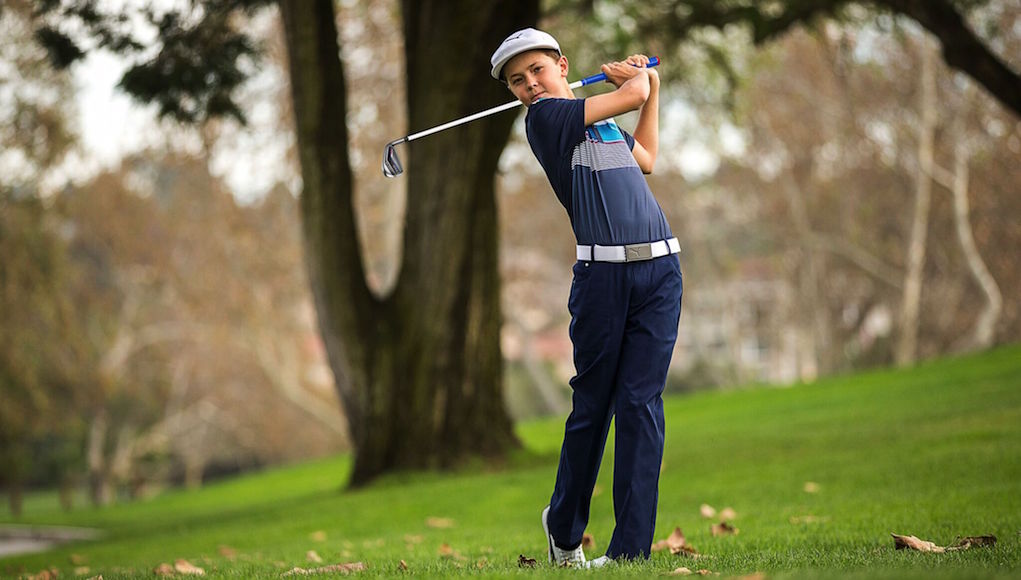
Golf equipment companies that make clubs for junior golfers are in a difficult position. They need to look out for their business by turning profits, developing brand loyalty and ultimately making their customers happy. But these equipment companies also need to look out for the future of the sport, and get clubs in the hands of junior golfers that will properly develop their golf games.
As such, I want to have a conversation about Cobra’s new Junior F7 One irons, which are single-length golf clubs made for juniors aged 13-15 years old, and the possible consequences (negative or positive) of putting these clubs in their hands.
First, I’d like to commend Cobra on making a set of irons that may make the game easier for more junior golfers, and for being bold in its chase to simplify the game. The single-length iron sets were developed by Tom Olsavsky, the Vice President of R&D for Cobra, after thorough testing, study and input from Mike Schy, a proponent of The Golfing Machine theories and Bryson DeChambeau’s longtime swing coach. Although the single-length system is not widely accepted — not yet, at least — the concept of single-length irons is such that a golfer doesn’t need to change his/her swing between irons because they’re all the same length, weight and have the same lie angle. To make the golf ball go different distances, single-length irons clubs use different lofts and head designs. That certainly can simply things.
Junior golf equipment has come a long way from the days of simply cutting down adult sets, or using your father’s hand-me-downs. There are now many different options for golfers of different sizes and strengths, and that’s a wonderful thing. Also, Cobra gave these particular irons serious engineering attention and similar technologies as the adult, one-length sets.
Like the adult versions, the F7 Junior One irons have TechFlo — a technology designed to help the longer irons fly higher and farther — and they also have PwrShell faces, which means they are thinner and more forgiving across the face. The grooves are milled and designed to produce the proper spin for each individual iron. The clubs come stock with Lamkin EPDM REL-Red, White and Blue grips and graphite Fujikura Fuel Junior shafts (36.25 inches in length), and they come in a five-piece set (5-7-9-PW-SW) that sells for $449 available now at retail and online.
I question the effectiveness of buying a single-length club for a junior golfer who’s 13-15 years old — a fairly wide range of physical characteristics there — without getting fit, but that’s another argument for a different day. My particular worry is for junior golfers who plan to take the game seriously, and have hopes of competing in high school and attaining a college scholarship. Along with the benefits, there could be longterm drawbacks of using single-length irons at a young age.
As a former NCAA Division I golfer who used progressive, or “normal” length irons his entire career, I had a mostly positive experience with the single-length irons — for which I was fully fitted — during my experiment for a GolfWRX review. I’ve since switched back to a normal-length set of irons because of the limitations I felt with trajectory and distance control; the more time went on, the more I felt long irons went too low and short irons went too high. My shotmaking was also suffering around the greens.
For me, using single-length irons was an experiment that I underwent by choice, and switching back to “normal” irons was natural because my swing and mentality had developed using progressive-length irons. My fear for junior golfers ages 13-15 who are given a set of single-length clubs is that their swings would be ingrained under the single-length concept… a concept that isn’t necessarily for everyone. Junior golfers in the developing stage of their bodies and swings are impressionable, and switching back from the single-length set into normal length irons later in life could prove difficult. Also, their shotmaking could be sacrificed in the short- and long-run.
I spoke to top-100 fitter Scott Felix of Felix Clubworks, and Ryan Johnson, the 2015 Michigan Amatuer champion and a fitter at Carl’s Golfland, for their expert opinions on the topic. Felix said while the single-length system could be beneficial using the relatively shorter 5 iron in terms of contacting the center of the face more consistently — but not in creating more speed — the longer wedges may take away from touch and feel around the greens. He said while he wouldn’t necessarily recommend single-length irons to a junior golfer, he would evaluate their performance with the clubs and help the junior get what they play the best. Johnson added that the single-length system may be easier since it’s only one swing in theory, but that the system might work best for a one-plane type swing (which The Golfing Machine calls a “zero shift”) and for junior golfers who understand and embrace the concept. As an accomplished player himself, Johnson once tried the one-length system and found difficulty with the short irons and wedges because they flew too high and to the left, and said “I couldn’t even think about hitting a bunker shot with them.”
“I wouldn’t tell a junior golfer or a parent not to (buy a single-length set),” Johnson said. “I’d just give them a rundown of the concept and what it entails.”
Olsavsky, on the other hand, doesn’t see a downside to the single-length system. “If a kid can hit a 7-iron, [he or she] can hit every club in the bag,” he says, and that one-length irons will ultimately put less stress on the mind and body throughout a junior’s life if they stick to one-length irons. He described a short game test that Cobra performed on one-length wedges vs. normal-length wedges, where a group of 2-12 handicappers hit 20- and 30-yard shots, as well as a chip shot and a flop shot. The results of the test showed that shots hit with single-length wedges finished closer to the hole and were more preferred in three of the four locations.
Regardless of performance, however, junior golfers are influenced heavily by what they see on TV or what their friends are doing.
“Since working with Bryson DeChambeau to help bring this concept to life in two adult sets of irons earlier this year, we have had requests from retailers and consumers to offer a set of one-length irons for junior golfers,” Olsavsky said in a press release.
So let’s say a junior’s favorite golfer is Bryson DeChambeau and they see him using single-length irons. Obviously, they ask their parents to buy them a set of single-length irons because it’s “cool.”
Parents should proceed with caution here. If a child wants to compete at a high level, it’s a bigger decision than simply saying, “Oh, this is what the kid says he wants so I’m going to buy it for him.” Let’s remember, DeChambeau himself grew up using a conventional length set of irons and later switched.
That’s not to say single-length is the wrong decision, either. Some kids will absolutely thrive under a single-length system, and in turn have confidence they wouldn’t have otherwise. The game may be simplified and come easier for the junior golfer because of it, and make golf fun.
For others, their development may be stunted. That’s why seeking professional guidance in this circumstance is so crucial.

Cobra has this to say about the performance aspects of the clubs.
“We tested these irons among a wide range of skill levels ranging in age from 13-15 and we found that universally they delivered more consistency and better performance for these younger golfers,” Olavsky said in a press release.
Personally, I don’t doubt that to be the case. In a vacuum, the irons surely perform really well (it’s more of the long-term effects that have me nervous).
Let me make this clear: I’m not bashing Cobra for providing single-length irons as an OPTION for the youth, I’m simply warning parents and junior golfers that the decision to buy these clubs is an important one. It will have lasting effects, whether positive or negative. Before buying a set of single-length irons for a junior golfer, please have this conversation with them under the supervision of a professional fitter or teaching professional.
We don’t want to rob golf of the next Justin Thomas just because he/she idolizes Bryson DeChambeau, or vice versa.
- LIKE36
- LEGIT4
- WOW1
- LOL4
- IDHT4
- FLOP3
- OB5
- SHANK40
Opinion & Analysis
The Wedge Guy: What really makes a wedge work? Part 1

Of all the clubs in our bags, wedges are almost always the simplest in construction and, therefore, the easiest to analyze what might make one work differently from another if you know what to look for.
Wedges are a lot less mysterious than drivers, of course, as the major brands are working with a lot of “pixie dust” inside these modern marvels. That’s carrying over more to irons now, with so many new models featuring internal multi-material technologies, and almost all of them having a “badge” or insert in the back to allow more complex graphics while hiding the actual distribution of mass.
But when it comes to wedges, most on the market today are still single pieces of molded steel, either cast or forged into that shape. So, if you look closely at where the mass is distributed, it’s pretty clear how that wedge is going to perform.
To start, because of their wider soles, the majority of the mass of almost any wedge is along the bottom third of the clubhead. So, the best wedge shots are always those hit between the 2nd and 5th grooves so that more mass is directly behind that impact. Elite tour professionals practice incessantly to learn to do that consistently, wearing out a spot about the size of a penny right there. If impact moves higher than that, the face is dramatically thinner, so smash factor is compromised significantly, which reduces the overall distance the ball will fly.
Every one of us, tour players included, knows that maddening shot that we feel a bit high on the face and it doesn’t go anywhere, it’s not your fault.
If your wedges show a wear pattern the size of a silver dollar, and centered above the 3rd or 4th groove, you are not getting anywhere near the same performance from shot to shot. Robot testing proves impact even two to three grooves higher in the face can cause distance loss of up to 35 to 55 feet with modern ‘tour design’ wedges.
In addition, as impact moves above the center of mass, the golf club principle of gear effect causes the ball to fly higher with less spin. Think of modern drivers for a minute. The “holy grail” of driving is high launch and low spin, and the driver engineers are pulling out all stops to get the mass as low in the clubhead as possible to optimize this combination.
Where is all the mass in your wedges? Low. So, disregarding the higher lofts, wedges “want” to launch the ball high with low spin – exactly the opposite of what good wedge play requires penetrating ball flight with high spin.
While almost all major brand wedges have begun putting a tiny bit more thickness in the top portion of the clubhead, conventional and modern ‘tour design’ wedges perform pretty much like they always have. Elite players learn to hit those crisp, spinny penetrating wedge shots by spending lots of practice time learning to consistently make contact low in the face.
So, what about grooves and face texture?
Grooves on any club can only do so much, and no one has any material advantage here. The USGA tightly defines what we manufacturers can do with grooves and face texture, and modern manufacturing techniques allow all of us to push those limits ever closer. And we all do. End of story.
Then there’s the topic of bounce and grinds, the most complex and confusing part of the wedge formula. Many top brands offer a complex array of sole configurations, all of them admittedly specialized to a particular kind of lie or turf conditions, and/or a particular divot pattern.
But if you don’t play the same turf all the time, and make the same size divot on every swing, how would you ever figure this out?
The only way is to take any wedge you are considering and play it a few rounds, hitting all the shots you face and observing the results. There’s simply no other way.
So, hopefully this will inspire a lively conversation in our comments section, and I’ll chime in to answer any questions you might have.
And next week, I’ll dive into the rest of the wedge formula. Yes, shafts, grips and specifications are essential, too.
- LIKE13
- LEGIT4
- WOW1
- LOL1
- IDHT2
- FLOP2
- OB1
- SHANK1
Golf's Perfect Imperfections
Golf’s Perfect Imperfections: Amazing Session with Performance Coach Savannah Meyer-Clement

In this week’s episode, we spent some time with performance coach Savannah Meyer-Clement who provides many useful insights that you’ll be able to implement on the golf course.
- LIKE0
- LEGIT0
- WOW0
- LOL0
- IDHT0
- FLOP0
- OB0
- SHANK0
19th Hole
Vincenzi’s 2024 RBC Heritage betting preview: Patrick Cantlay ready to get back inside winner’s circle

Just a two-hour drive from Augusta National, the PGA TOUR heads to Harbour Town Golf Links in Hilton Head Island, S.C. Hilton Head Island is a golfer’s paradise and Harbour Town is one of the most beautiful and scenic courses on the PGA TOUR.
Harbour Town Golf Links is a par-71 that measures 7,121 yards and features Bermuda grass greens. A Pete Dye design, the course is heavily tree lined and features small greens and many dog legs, protecting it from “bomb-and-gauge” type golfers.
The field is loaded this week with 69 golfers with no cut. Last year was quite possibly the best field in RBC Heritage history and the event this week is yet another designated event, meaning there is a $20 million prize pool.
Most of the big names on the PGA Tour will be in attendance this week with the exceptions of Hideki Matsuyama and Viktor Hovland. Additionally, Webb Simpson, Shane Lowry, Gary Woodland and Kevin Kisner have been granted sponsors exemptions.
Past Winners at Harbour Town
- 2023: Matt Fitzpatrick (-17)
- 2022: Jordan Spieth (-13)
- 2021: Stewart Cink (-19)
- 2020: Webb Simpson (-22)
- 2019: CT Pan (-12)
- 2018: Sotoshi Kodaira (-12)
- 2017: Wesley Bryan (-13)
- 2016: Branden Grace (-9)
- 2015: Jim Furyk (-18)
In this article and going forward, I’ll be using the Rabbit Hole by Betsperts Golf data engine to develop my custom model. If you want to build your own model or check out all of the detailed stats, you can sign up using promo code: MATTVIN for 25% off any subscription package (yearly is best value).
Key Stats For Harbour Town
Let’s take a look at key metrics for Harbour Town Golf Links to determine which golfers boast top marks in each category over their past 24 rounds.
Strokes Gained: Approach
Strokes Gained: Approach is exceedingly important this week. The greens at Harbour Town are about half the size of PGA TOUR average and feature the second-smallest greens on the tour. Typical of a Pete Dye design, golfers will pay the price for missed greens.
Total SG: Approach Over Past 24 Rounds
- Scottie Scheffler (+1.27)
- Tom Hoge (+1.27)
- Corey Conners (+1.16)
- Austin Eckroat (+0.95)
- Cameron Young (+0.93)
Good Drive %
The fairways at Harbour Town are tree lined and feature many dog legs. Bombers tend to struggle at the course because it forces layups and doesn’t allow long drivers to overpower it. Accuracy is far more important than power.
Good Drive % Over Past 24 Rounds
- Brice Garnett (88.8%)
- Shane Lowry (+87.2%)
- Akshay Bhatia (+86.0%)
- Si Woo Kim (+85.8%)
- Sepp Straka (+85.1%)
Strokes Gained: Total at Pete Dye Designs
Pete Dye specialists tend to play very well at Harbour Town. Si Woo Kim, Matt Kuchar, Jim Furyk and Webb Simpson are all Pete Dye specialists who have had great success here. It is likely we see some more specialists near the top of the leaderboard this week.
SG: TOT Pete Dye per round over past 36 rounds:
- Xander Schauffele (+2.27)
- Scottie Scheffler (+2.24)
- Ludvig Aberg (+2.11)
- Brian Harman (+1.89)
- Sungjae Im (+1.58)
4. Strokes Gained: Short Game (Bermuda)
Strokes Gained: Short Game factors in both around the green and putting. With many green-side bunkers and tricky green complexes, both statistics will be important. Past winners — such as Jim Furyk, Wes Bryan and Webb Simpson — highlight how crucial the short game skill set is around Harbour Town.
SG: SG Over Past 24 Rounds
- Jordan Spieth (+1.11)
- Taylor Moore (+1.02)
- Wyndham Clark (+0.98)
- Mackenzie Hughes (+0.86)
- Andrew Putnam (+0.83)
5. Greens in Regulation %
The recipe for success at Harbour Town Golf Links is hitting fairways and greens. Missing either will prove to be consequential — golfers must be in total control of the ball to win.
Greens in Regulation % over past 24 rounds:
- Brice Garnett (+75.0%)
- Scottie Scheffler (+69.9%)
- Corey Conners (+69.0%)
- Shane Lowry (+68.3%)
- Patrick Rodgers (+67.6%)
6. Course History
Harbour Town is a course where players who have strong past results at the course always tend to pop up.
Course History over past 24 rounds:
- Patrick Cantlay (+2.34)
- Cam Davis (+2.05)
- J.T. Poston (+1.69)
- Justin Rose (+1.68)
- Tommy Fleetwood (+1.59)
The RBC Heritage Model Rankings
Below, I’ve compiled overall model rankings using a combination of the five key statistical categories previously discussed — SG: Approach (24%), Good Drives (20%), SG: SG (14%), SG: Pete Dye (14%), GIR (14%), and Course History (14%)
- Shane Lowry
- Russell Henley
- Scottie Scheffler
- Xander Schauffele
- Corey Conners
- Wyndham Clark
- Christiaan Bezuidenhout
- Matt Fitzpatrick
- Cameron Young
- Ludvig Aberg
2024 RBC Heritage Picks
Patrick Cantlay +2000 (FanDuel)
With the exception of Scottie Scheffler, the PGA Tour has yet to have any of their star players show peak form during the 2024 season. Last week, Patrick Cantlay, who I believe is a top-5 players on the PGA Tour, took one step closer to regaining the form that’s helped him win eight events on Tour since 2017.
Cantlay limped into the Masters in poor form, but figured it out at Augusta National, finishing in a tie for 20th and ranking 17th for the week in Strokes Gained: Ball Striking. The former FedEx Cup champion will now head to one of his favorite golf courses in Harbour Town, where he’s had immaculate results over the years. In his six trips to the course, he’s only finished worse than 7th one time. The other finishes include three third places (2017, 2019, 2023) and one runner-up finish (2022). In his past 36 rounds at Harbour Town, Cantlay ranks 1st in Strokes Gained: Total per round at the course by a wide margin (+2.36).
Cantlay is winless since the 2022 BMW Championship, which is far too long for a player of his caliber. With signs pointing to the 32-year-old returning to form, a “signature event” at Harbour Town is just what he needs to get back on the winning track.
Tommy Fleetwood +3000 (FanDuel)
I truly believe Tommy Fleetwood will figure out a way to win on American soil in 2024. It’s certainly been a bugaboo for him throughout his career, but he is simply too talented to go another season without winning a PGA Tour event.
At last week’s Masters Tournament, Fleetwood made a Sunday charge and ended up finishing T3 in the event, which was his best ever finish at The Masters. For the week, the Englishman ranked 8th in the field in Strokes Gained: Approach, 10th in Strokes Gained: Ball Striking and 16th in Strokes Gained: Putting.
Harbour Town is a perfect layout for Fleetwood, and he’s had relative success at this Pete Dye design in the past. In his four trips to the course, he’s finished inside of the top 25 three times, with his best finish, T10, coming in 2022. The course is pretty short and can’t be overpowered, which gives an advantage to more accurate players such as Fleetwood. Tommy ranks 8th in the field in Good Drive % and should be able to plot his way along this golf course.
The win is coming for Tommy lad. I believe there’s a chance this treasure of a golf course may be the perfect one for him to finally break through on Tour.
Cameron Young +3300 (FanDuel)
Cameron Young had a solid Masters Tournament last week, which is exactly what I’m looking for in players who I anticipate playing well this week at the RBC Heritage. He finished in a tie for 9th, but never felt the pressure of contending in the event. For the week, Young ranked 6th in Strokes Gained: Off the Tee and 6th in Strokes Gained: Ball Striking.
Despite being one of the longest players off the tee on the PGA Tour, Young has actually played some really good golf on shorter tracks. He finished T3 at Harbour Town in 2023 and ranks 20th in the field in Good Drive% and 16th in Greens in Regulation in his past 24 rounds. He also has strong finishes at other shorter courses that can take driver out of a players hand such as Copperhead and PGA National.
Young is simply one of the best players on the PGA Tour in 2024, and I strongly believe has what it takes to win a PGA Tour event in the very near future.
Corey Conners +5500 (FanDuel)
Corey Conners has had a disappointing year thus far on the PGA Tour, but absolutely loves Harbour Town.
At last week’s Masters Tournament, the Canadian finished T30 but ranked 20th in the field in Strokes Gained: Approach. In his past 24 rounds, Conners ranks 3rd in the field in Strokes Gained: Approach, 3rd in Greens in Regulation % and 24th in Good Drive %.
In Conners’ last four trips to Harbour Town, his worst finish was T31, last season. He finished T4 in 2021, T12 in 2022 and ranks 8th in Strokes Gained: Total at the course over his past 36 rounds.
Conners hasn’t been contending, but his recent finishes have been encouraging as he has finished in the top-25 in each of his past three starts prior to The Masters, including an impressive T13 at The PLAYERS. His recent improvement in ball striking as well as his suitability for Harbour Town makes Conners a high upside bet this week.
Shane Lowry (+7500) (FanDuel)
When these odds were posted after Lowry was announced in the field, I have to admit I was pretty stunned. Despite not offering much win equity on the PGA Tour over the last handful of years, Shane Lowry is still a top caliber player who has the ability to rise to the top of a signature event.
Lowry struggled to score at The Masters last week, but he actually hit the ball really well. The Irishman ranked 1st for Strokes Gained: Approach on the week and 7th in Strokes Gained: Ball Striking. As usual, it was the putter that let him down, as he ranked 60th in the field in Strokes Gained: Putting.
Harbour Town is most definitely one of Lowry’s favorite courses on the PGA Tour. In his six starts there, he’s finished in the top 10 three times, including third twice. Lowry is sensational at Pete Dye designs and ranks 7th in Strokes Gained: Total in his past 36 rounds on Dye tracks.
Lowry is perfect for Harbour Town. In his past 24 rounds, he ranks 5th in Strokes Gained: Approach, 2nd in Good Drive% and 5th in Green in Regulation %. If he figures it out on the greens, Shane could have his first win in America since 2015.
Lucas Glover +12000 (FanDuel)
This is one of my weekly “bet the number” plays as I strongly believe the odds are just too long for a player of Glover’s caliber. The odds have been too long on Glover for a few weeks now, but this is the first event that I can get behind the veteran being able to actually contend at.
Glover is quietly playing good golf and returning to the form he had after the understandable regression after his two massive victories at the end of 2023. He finished T20 at The Masters, which was his best ever finish at Augusta National. For the week, Lucas ranked 18th for Strokes Gained: Approach and 20th in Strokes Gained: Ball Striking.
Over his past 24 rounds, Glover ranks 9th in Strokes Gained: Approach and 13th in Good Drive %. Harbour Town is a short course that the 44-year-old will be able to keep up with the top players on Tour off the tee. He’s played the course more than 20 times, with mixed results. His best finishes at Harbour Town include a T7 in 2008, but recently has a finish of T21 in 2020.
Glover has proven he can contend with the stars of the Tour on any given week, and this number is flat out disrespectful.
- LIKE30
- LEGIT5
- WOW2
- LOL1
- IDHT1
- FLOP2
- OB0
- SHANK2
-

 19th Hole1 week ago
19th Hole1 week agoDave Portnoy places monstrous outright bet for the 2024 Masters
-

 19th Hole3 weeks ago
19th Hole3 weeks agoThings got heated at the Houston Open between Tony Finau and Alejandro Tosti. Here’s why
-

 19th Hole1 week ago
19th Hole1 week agoTiger Woods arrives at 2024 Masters equipped with a putter that may surprise you
-

 19th Hole2 weeks ago
19th Hole2 weeks agoReport: Tiger Woods has ‘eliminated sex’ in preparation for the 2024 Masters
-

 19th Hole4 days ago
19th Hole4 days agoTwo star names reportedly blanked Jon Rahm all week at the Masters
-

 19th Hole4 days ago
19th Hole4 days agoNeal Shipley presser ends in awkward fashion after reporter claims Tiger handed him note on 8th fairway
-

 19th Hole3 days ago
19th Hole3 days agoReport: LIV Golf identifies latest star name they hope to sign to breakaway tour
-

 19th Hole2 weeks ago
19th Hole2 weeks agoAddiction, spinal fusion, and scam artists – Everything Anthony Kim revealed in candid interview with David Feherty



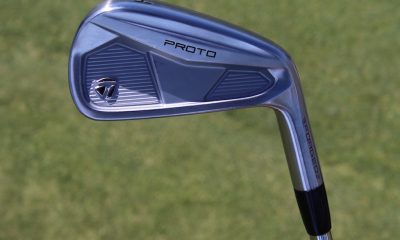

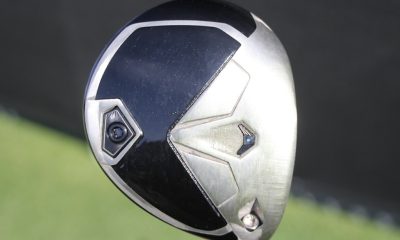

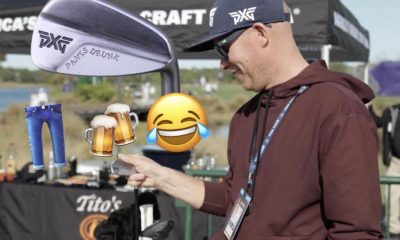

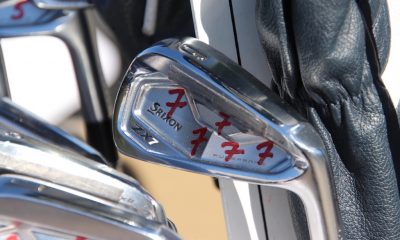

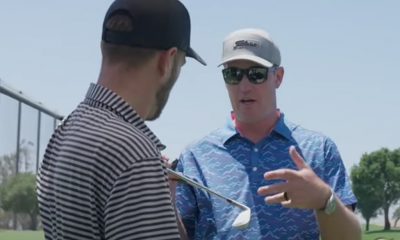
















Bruce
May 19, 2017 at 9:21 am
Written from an OEM perspective; that is, throw away a good idea to preserve the business profits. Quit bringing up red herring non-issues for marketing reasons. If we all played single length and someone introduced variable length, what an uproar that would cause. Golf is a marketing driven business: very very little science (I am a PhD Mechanical Engineer who understands golf science). Single length irons make good sense. Multiple length irons and swing weight matching HAVE NO BASIS IN SCIENCE. These are all marketing.
Mat
May 20, 2017 at 7:29 pm
Actually, multi-length irons have plenty of basis in science. They use length of shaft as one of two main properties that provide distance gaps between irons. By doing this, they can achieve a more consistent descent angle, apex, and distance range within a set.
These are the issues that SLI are working hard to overcome. There have been advancements, but that doesn’t mean they’re perfect. But for a ME PhD to go on about how MLI have no basis is ignorant.
Dave R
Apr 26, 2017 at 10:07 pm
Ken I think you need a hug.
Eddie
Apr 26, 2017 at 6:32 pm
Talent will always trump equipment. No piece of equipment will ever make or break someone’s golf career.
The dude
Apr 26, 2017 at 4:55 pm
What I don’t understand….why it takes someone forever to share their thoughts on a post. If it’s longer than 5 lines…just read the last sentence….
Scott
Apr 26, 2017 at 4:06 pm
Just because you have a different grip with different clubs does not mean everyone else does. And just how many 6′ 4″ juniors do you come across? Wow.
Philip
Apr 26, 2017 at 2:29 pm
They are if you are an OEM that wants to start a new batch of players that will not have an enormous supply of cheaper used clubs to pick from once they grow up and can spend their own money.
cody
Apr 26, 2017 at 1:18 pm
I have a 5 year old girl that i would like to get into golf. I will be honest i dont see a donw side to single length irons to start with. Are you all really saying that a kid cannot switch to more traditional clubs at some point?? c’mon man!!!
Mat
Apr 26, 2017 at 4:09 am
Navel gazing. If a kid is starting out, they get a lower learning curve. Fantastic.
What makes anyone think that the equipment they had as a 14 year old will affect them as an adult? Seriously, if you’re talking about things like apex height and swing weight to a 14 year old, not only is it a relevant conversation, let them choose themselves!
This product is designed for Daddy Upper-middle-class to give to his kid as a starter set that does not suck. This is not, at all, for serious kids. The serious kid MIGHT strip the crap shaft and play something else if they want SLI, but you’re talking a few very good kids with parental bankroll.
Arguing against quality options for kids is not growing the game. It’s the opposite.
AussieAussieAussie
Apr 26, 2017 at 12:35 am
I still can not understand why so many people hate the idea of single length irons? If a kid starts out playing golf with a single length set in years to come- when they have made them for the 3-5yr old age groups, then he or she will know no different than to use single length, to them varying length could be a foreign and ridiculous concept. Ultimately we want to as golfers grow the game- however that be. Relaxed dress codes, cheaper big name brand clubs more realist available, so why not just embrace the change, I’m sure hybrids and lob wedges were seen as a fad at the time of establishment? Yet here we are with most of us having one or both in our bag?! If one length works great, if it doesn’t that’s also fine! I wouldn’t expect you all to go swing like Jim Fuyrk just because it works for him. It’s not likely to work for you but no one begrudges him his success as a result of it?!
Ken
Apr 26, 2017 at 12:09 am
I bought a set of Tommy Armour EQLs many years ago and got rid of them for that exact reason. I couldn’t use my 7 iron left hand grip for the other clubs and particularly for the low loft clubs. Junior golfers who try to use these clubs will limit their progress and likely never make it into the pro tours.
Scott
Apr 26, 2017 at 4:04 pm
That is quite a leap to think that someone starting the game should not start with an easier system, then move into a different set that may work better for them down the road. I started with blades and persimmon woods – certainly a world of difference over today’s equipment.
Andrew you could not be any more wrong.
Scott
Apr 26, 2017 at 4:04 pm
Ken,
As if you could even know that.
Prime21
Apr 25, 2017 at 9:07 pm
It’s like everything else in golf, it will work for some, not for others. Hopefully Cobra is willing to supply a Demo Set so that Juniors could test them out prior to purchasing. Wishful thinking, but a thought!
Ken
Apr 26, 2017 at 12:12 am
Good junior golfers will never adapt to the single length/single shaft lie clubs because it will be too frustrating for younger minds to go through the trial and error phase of conversion.
Scott
Apr 26, 2017 at 4:10 pm
Ken,
Juniors are probably the BEST at going through a learning phase because they can look at things with an open mind and have not been influenced by people such as yourself.
RI_Redneck
Apr 25, 2017 at 8:48 pm
IMHO:
Shafts should have been steel.
Heads should have adjustable weights to adjust for longer lengths for varying heights and as the kid grows.
Price should be lower (steel shafts hep here).
It would have AT LEAST offered length options based on the kids height. Overlooking this greatly hamstrings Cobra’s ability to market these to the young masses. 13-15 yr olds height can vary A LOT. Good concept, but poor marketing.
BT
Steve
Apr 25, 2017 at 2:11 pm
Why is nobody complaining about the insane cost? This is at least at the same cost as a set of regular irons $90 per. How can that ever be good for junior golf?
mvhoffman
Apr 25, 2017 at 2:00 pm
I just have a feeling that these will continue to be developed. Players will soon start to play these from the start of their golf “career”. The USGA will wait, and wait, and wait…. and wait… just like they did with the belly putter, and then find a loophole to take these away and destroy more careers… I’m going to start a thread on this.
Ken
Apr 26, 2017 at 12:16 am
Parents who buy such clubs for their aspiring amateur golfer and hopefully a golf scholarship are only trying to cover up the swing faults of their child. That’s the only reason an adult will buy them too. An expensive band-aid remedy for a poor swing with regular clubs.
Brandon
Apr 26, 2017 at 4:58 pm
Ok, you can say whatever you want, but don’t you even dare thinking about using a putter that isn’t a blade. On that note, trade in your 460 cc driver for a good old fashioned steel shaft 975D driver, as current day drivers are also an “expensive band-aid for a poor swing”.
Tom 1
Apr 25, 2017 at 11:24 am
Yes